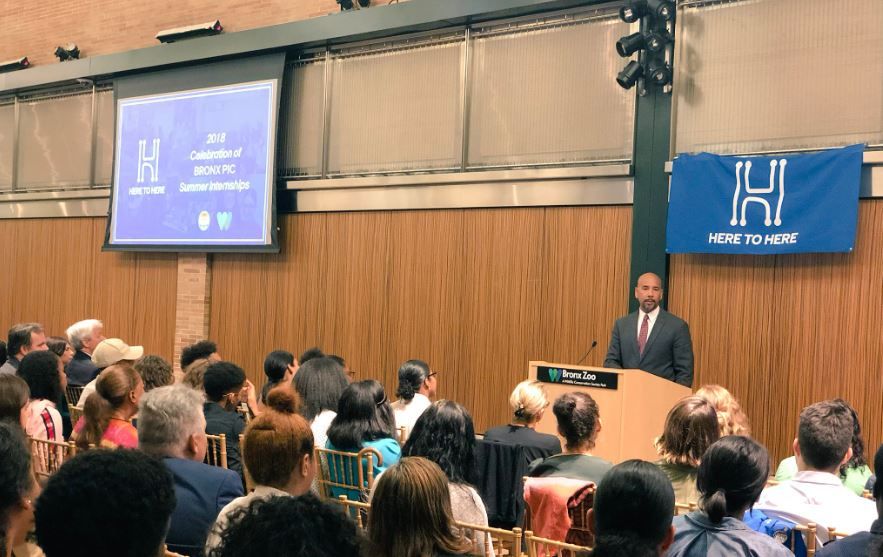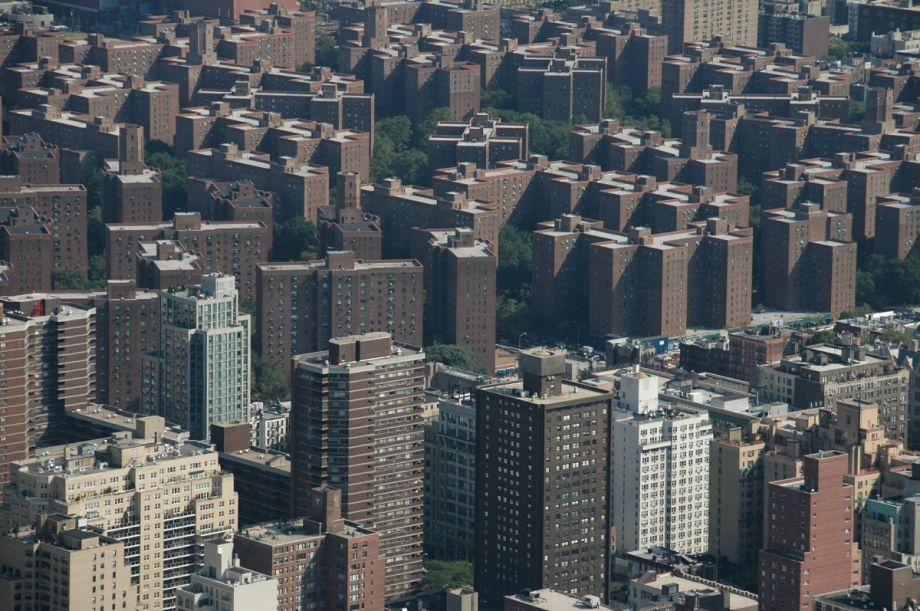Eddie Summers grew up in the South Bronx, had his first internship at 13 years old, and by 15 worked at several law firms in New York City as a legal assistant. His early career path isn’t typical for most young people, and certainly not in the Bronx. In fact, despite massive investment and growth, the borough’s youth unemployment rate remains stubbornly high. In 2017 it was 21.7 percent, compared to 15.8 percent across New York City.
Summers knows that internships can be a significant opportunity for young people in low-income communities — but there are often hurdles in securing one. “Too often, it’s about who you know, and low-income families don’t have the same sense of network to know about opportunities,” he says.
But Summers was just tapped by HERE to HERE, a Bronx nonprofit creating pathways to employment, to change that. He is overseeing the newly formed Bronx Private Industry Council, unique to New York City as a borough-based, employer-led entity focused on youth workforce development. Taking inspiration from the 40-year-old Boston Private Industry Council, it’s out to transform how businesses, schools and community organizations develop talent pipelines in the Bronx.
The Private Industry Council emerged from a task force and pilot program last year. The goal was to address a gap between what Bronx employers need from young employees and the qualifications of the local talent pipeline.
HERE to HERE found there’s actually massive need to be filled not only in the borough, but across the city. According to the Partnership for New York City, there are about 230,000 unfilled job openings, often middle-skill positions that include machine operators, computer programmers and retail supervisors. Reductions in high school vocational training have shrunk the pool of available talent.
HERE to HERE, alongside Bronx Borough President Ruben Diaz Jr. and Bronx Overall Economic Development Corporation, envisioned the Bronx Private Industry Council as a tool to address the needs of both employers and young people.
Through 2018 a task force including Borough President Diaz Jr., HERE to HERE founding chair Judy Dimon and Bronx Overall Economic Development Corporation president Marlene Cintron met with grassroots organizations, educators and business leaders to discuss the Private Industry Council and began recruiting employers. Ultimately a coalition of 20 Bronx employers joined the task force with a common goal: fostering a local talent pool from which employers could reliably recruit.
For the pilot, HERE to HERE worked with local schools to recruit 257 students, who were then paired with employers for a six-week paid internship. Interns worked in fields like administration, human resources and finance, in fields as diverse as food and grocery, film and banking.
Students were also required to attend at least three workshops — including goal-setting, leadership, and financial literacy sessions — to ensure they were prepared to meet their employer’s expectations.
The pilot was meant to pair action with the local employment need. “We didn’t want this to be an abstract conversation,” says Abby Jo Sigal, chief executive of HERE to HERE. “We wanted the task force to go through the process of interacting, hiring and working with young people so they could see what it meant for their own businesses, and collectively as a group.”

Bronx borough president Ruben Diaz Jr. at an event celebrating the pilot cohort of interns. (Credit: HERE to HERE)
One employer, Spring Bank, doesn’t typically offer short-term internships but agreed to participate in the program. “To bring motivated young people into the bank is something that’s important to us,” says Demetris Giannoulias, the bank’s chief executive. “A lot of our middle-management started as front-line employees, so it’s very valuable.”
Giannoulias says the internship, coupled with support from HERE to HERE, went well — the bank will participate again this summer. Overall, 100 percent of employers who participated said they’d hire an intern again through the program, while 94 percent were “satisfied” or “very satisfied” with the performance and professionalism of their intern.
100 percent of students said their internship offered them the opportunity to build a network that included professional adults; 53.5 percent said their experience helped them better define a career choice.
A final feasibility study provided recommendations for the next steps, making the case to officially launch the Bronx Private Industry Council this spring. All the findings are documented in a report released last month.
Under the leadership of Summers, the Private Industry Council will be incubated by HERE to HERE for approximately two years before investigating a sustainable path to establishing itself as an independent organization.
The work ahead is significant. There’s the need to recruit more employers but also to connect small businesses without formal HR departments to educational institutions and training providers. In-school career training programs will be crucial to developing the framework of the program. And increasing the number of internships will mean scaling the support network in place for young people.
In creating this formal infrastructure, Sigal hopes it will lead to the informal networks common among wealthier families who help their children secure their first job. “We can spend a lot of time creating the formal mechanisms, but given the way employment, particularly internships, work, we can’t lose site of the informal network,” she says.
“There’s an incredible amount of talent here in the Bronx,” Summers says, “And given the opportunity I’m sure they can thrive. I want to make sure young people in the Bronx had the same great opportunities I had.”
EDITOR’S NOTE: A photo caption originally misidentified Bronx Borough President Ruben Diaz Jr. We’ve corrected the error.

Emily Nonko is a social justice and solutions-oriented reporter based in Brooklyn, New York. She covers a range of topics for Next City, including arts and culture, housing, movement building and transit.
Follow Emily .(JavaScript must be enabled to view this email address)
















